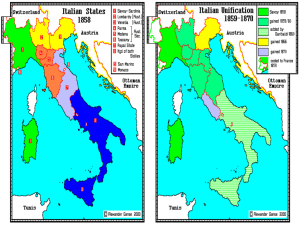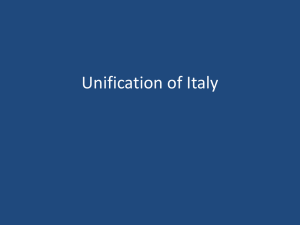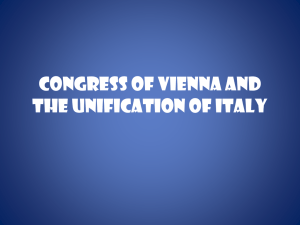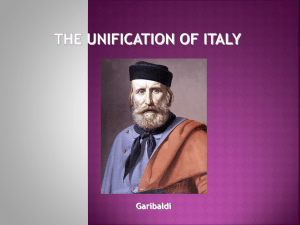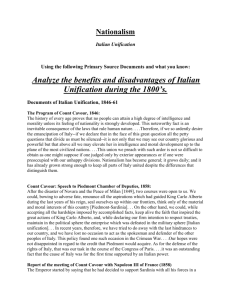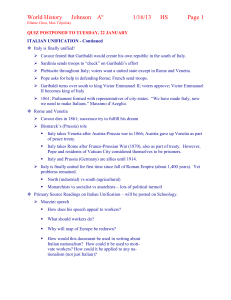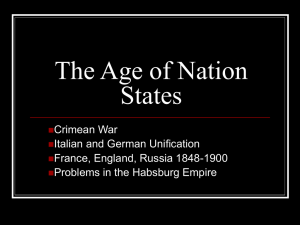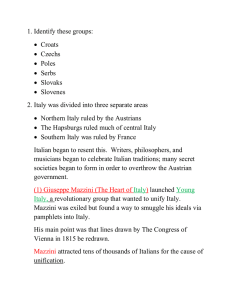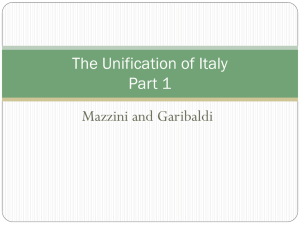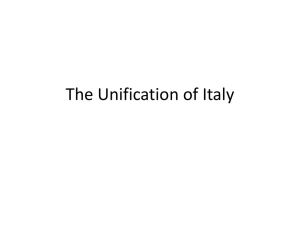Unification of Italy For centuries Italy felt that unification would be a
advertisement
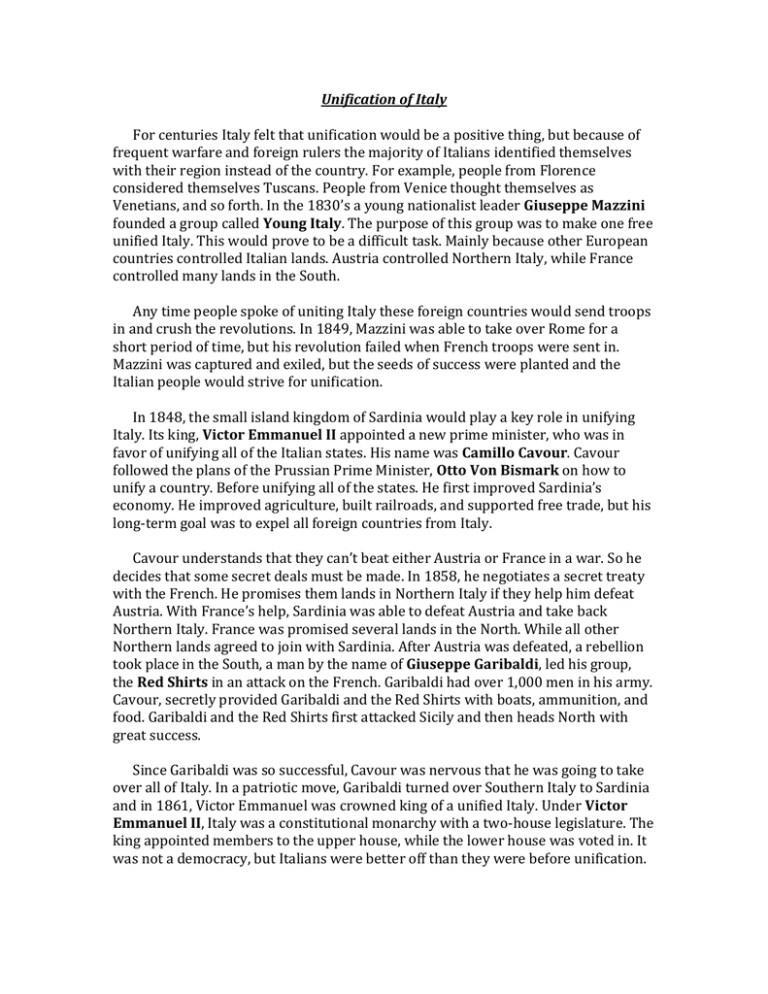
Unification of Italy For centuries Italy felt that unification would be a positive thing, but because of frequent warfare and foreign rulers the majority of Italians identified themselves with their region instead of the country. For example, people from Florence considered themselves Tuscans. People from Venice thought themselves as Venetians, and so forth. In the 1830’s a young nationalist leader Giuseppe Mazzini founded a group called Young Italy. The purpose of this group was to make one free unified Italy. This would prove to be a difficult task. Mainly because other European countries controlled Italian lands. Austria controlled Northern Italy, while France controlled many lands in the South. Any time people spoke of uniting Italy these foreign countries would send troops in and crush the revolutions. In 1849, Mazzini was able to take over Rome for a short period of time, but his revolution failed when French troops were sent in. Mazzini was captured and exiled, but the seeds of success were planted and the Italian people would strive for unification. In 1848, the small island kingdom of Sardinia would play a key role in unifying Italy. Its king, Victor Emmanuel II appointed a new prime minister, who was in favor of unifying all of the Italian states. His name was Camillo Cavour. Cavour followed the plans of the Prussian Prime Minister, Otto Von Bismark on how to unify a country. Before unifying all of the states. He first improved Sardinia’s economy. He improved agriculture, built railroads, and supported free trade, but his long-term goal was to expel all foreign countries from Italy. Cavour understands that they can’t beat either Austria or France in a war. So he decides that some secret deals must be made. In 1858, he negotiates a secret treaty with the French. He promises them lands in Northern Italy if they help him defeat Austria. With France’s help, Sardinia was able to defeat Austria and take back Northern Italy. France was promised several lands in the North. While all other Northern lands agreed to join with Sardinia. After Austria was defeated, a rebellion took place in the South, a man by the name of Giuseppe Garibaldi, led his group, the Red Shirts in an attack on the French. Garibaldi had over 1,000 men in his army. Cavour, secretly provided Garibaldi and the Red Shirts with boats, ammunition, and food. Garibaldi and the Red Shirts first attacked Sicily and then heads North with great success. Since Garibaldi was so successful, Cavour was nervous that he was going to take over all of Italy. In a patriotic move, Garibaldi turned over Southern Italy to Sardinia and in 1861, Victor Emmanuel was crowned king of a unified Italy. Under Victor Emmanuel II, Italy was a constitutional monarchy with a two-house legislature. The king appointed members to the upper house, while the lower house was voted in. It was not a democracy, but Italians were better off than they were before unification.
